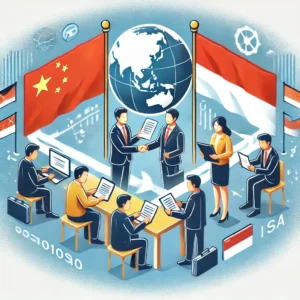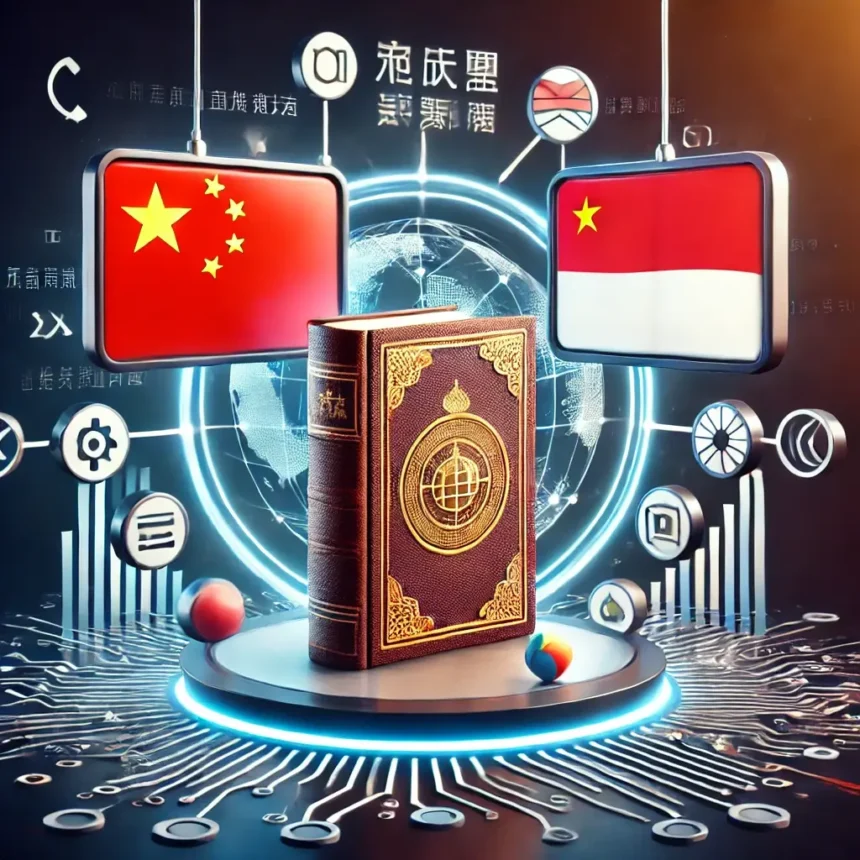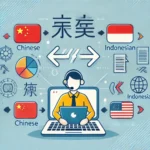Introduction
Translation plays a crucial role in bridging the communication gap between countries. When it comes to translating between China and Indonesia, the demand has surged in recent years due to business, tourism, and cultural exchanges. If you’re looking to translate China Indonesia, this guide will walk you through essential tools, techniques, and tips to ensure a seamless process.
Why Translate Between China and Indonesia?
China and Indonesia have seen increasing trade and tourism activities, creating the need for smooth communication. From business documents to everyday conversations, translating between Chinese (Mandarin) and Indonesian (Bahasa) helps break language barriers. Let’s explore some of the key reasons:
Trade and Business:
China is one of Indonesia’s largest trading partners. Accurate translation is vital for contracts, agreements, and product documentation.
Tourism:
With thousands of Chinese tourists visiting Indonesia yearly, translating travel guides, signs, and menus makes their experience more comfortable.
Cultural Exchange:
The two countries share a rich cultural history, and translations allow for better understanding in literature, films, and music.
Best Methods to Translate China Indonesia
Translating between Chinese and Indonesian requires more than just a basic dictionary. Here are some of the most effective ways to translate:
1. Human Translators
Using professional human translators is the best way to ensure accuracy. They understand the nuances of both languages and can provide context-based translations. In business and legal matters, using a professional is essential to avoid errors that machine translation might overlook.
2. Machine Translation Tools
For quick and basic translations, several online tools can help translate China Indonesia. Tools like Google Translate, Microsoft Translator, and Baidu Translate offer instant translations. However, these may not always be accurate for complex phrases or formal content.
3. Translation Apps
Mobile apps designed specifically for translating languages are another great solution. Apps such as SayHi and iTranslate support both Mandarin and Bahasa Indonesian, making them handy when you are on the go.
4. Language Exchange Programs
One of the more personalized ways to improve translation skills is by participating in language exchange programs. This method involves learning from native speakers of both languages, helping you understand cultural context.
Challenges of Translating China Indonesia
1. Different Writing Systems
One major challenge in translating between Chinese and Indonesian is the writing system. Chinese uses characters, while Indonesian uses the Latin alphabet. Translating Chinese characters accurately into Indonesian words can be tricky, especially with formal documents.
2. Tone Sensitivity
In Mandarin, tone changes can alter the meaning of a word, which makes it essential to translate carefully. Indonesian, on the other hand, does not rely on tones. Therefore, it’s critical to ensure that meanings remain intact during translation.
3. Cultural Nuances
Understanding cultural expressions is essential when you translate China Indonesia. Certain phrases in one language may not have a direct equivalent in the other, so cultural knowledge is crucial to ensure the meaning stays clear.
Effective Tools for Accurate Translation
1. Google Translate
Google Translate is one of the most popular tools for translating China Indonesia. It supports both languages and provides a basic, instant translation. While it may not be perfect for complex content, it is suitable for everyday phrases.
2. Baidu Translate
For Chinese, Baidu Translate offers better context understanding as it is specifically designed for Chinese users. Combining this tool with Indonesian dictionaries can yield more accurate results.
3. Papago
Papago, a translation app developed by Naver, offers Mandarin and Indonesian translation. It provides reliable translations for everyday conversations and informal text.
4. Translation Memory Software
If you are working on large projects, translation memory software such as SDL Trados Studio helps store translated phrases, making it easier to translate repetitive content between Chinese and Indonesian.
Tips for Successful Translation
1. Understand the Language Context
Before you start translating, it’s important to understand the context of the content. Chinese and Indonesian have many expressions that cannot be translated word-for-word. Knowing the content’s purpose will help in choosing the right words.
2. Use Simplified and Traditional Chinese Carefully
Chinese has both simplified and traditional writing systems. Make sure to select the correct format based on your audience. For example, if translating for Indonesia-based Chinese communities, they may use traditional characters.
3. Avoid Over-Reliance on Machine Translations
Machine translations are helpful, but they often fail to capture the deeper meaning of sentences. Always review machine translations with a human translator for critical content.
4. Familiarize Yourself with Common Phrases
Many common phrases between China and Indonesia are used frequently in business and daily life. Learning these phrases will save you time and ensure you provide accurate translations.
Popular Services for Translation
When you need professional assistance to translate China Indonesia, here are a few popular services:
OneSky OneSky offers language localization services, specializing in app and game translation between Chinese and Indonesian. It’s ideal for software developers looking to reach a broader audience in both countries.
Gengo Gengo provides fast and affordable translation services. They have human translators who specialize in Mandarin and Indonesian, ensuring precise translations for all kinds of content.
ProZ ProZ is a platform that connects you with freelance translators. You can find Mandarin to Indonesian translators with specific industry knowledge, allowing you to translate technical, legal, or creative content accurately.

FAQs About Translating Between Chinese and Indonesian
Q1: Can I rely solely on Google Translate for accurate translations?
While Google Translate is useful for everyday translations, it may not always provide contextually correct results for complex sentences. Always review translations with a professional for critical content.
Q2: What is the best method to translate business documents between Chinese and Indonesian?
For business documents, it’s recommended to use professional human translators who are experienced in both languages to ensure accuracy and avoid misinterpretation.
Q3: How do I handle cultural differences when translating?
Understanding the cultural context of both countries is essential. Certain phrases or expressions in Chinese may not have an equivalent in Indonesian. Consult a native speaker to ensure that cultural nuances are captured correctly.
Q4: What is the best app for travel translations between China and Indonesia?
SayHi and Papago are excellent apps for travelers. They provide translations for everyday phrases, making communication easier for tourists.
Q5: Should I use traditional or simplified Chinese for translation to Indonesian?
It depends on your target audience. For a general Indonesian audience, simplified Chinese is usually preferred. However, for Chinese communities in Indonesia, traditional Chinese may be more appropriate.
Conclusion
In a world where cross-cultural communication is becoming more common, translating between Chinese and Indonesian plays a vital role. Whether you’re translating for business, travel, or cultural exchange, the key is to choose the right tools and methods to ensure accurate and clear communication. By understanding the nuances of both languages and utilizing the resources available, you can achieve a smooth and effective translation experience.





